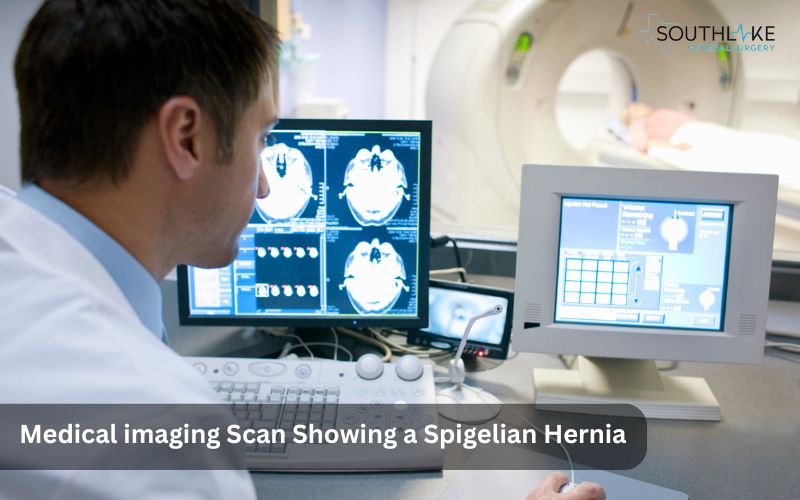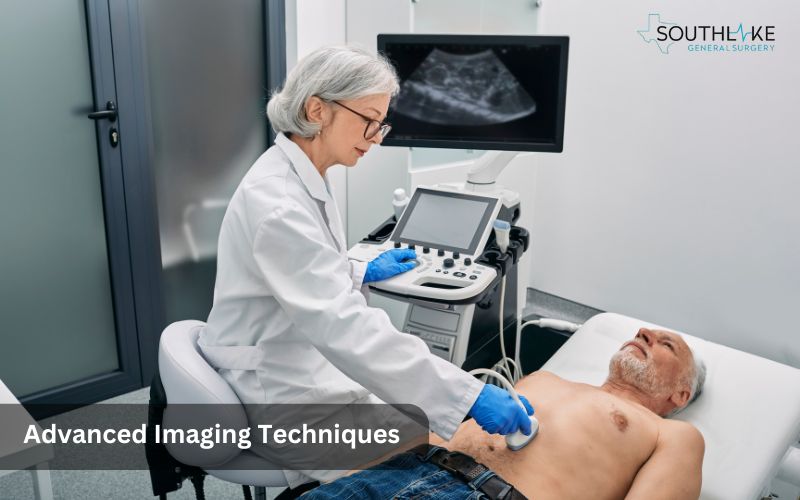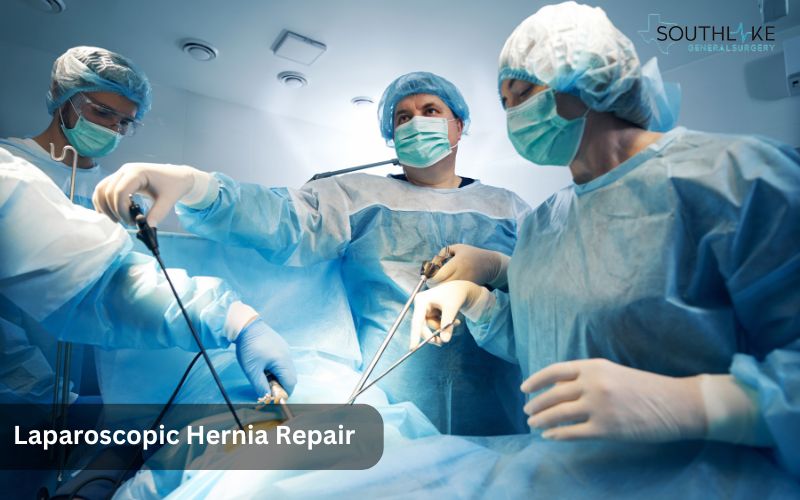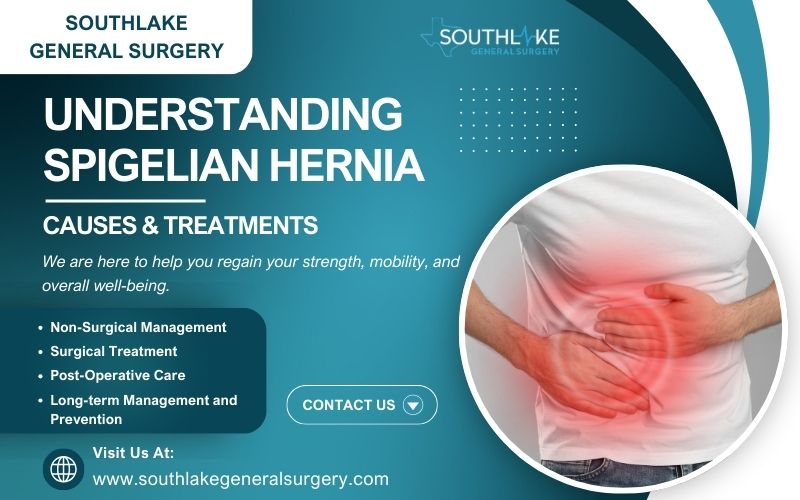A Spigelian hernia is a type of ventral hernia that occurs when a weak spot or opening develops in the Spigelian fascia, a layer of tissue that separates two groups of abdominal muscles. These hernias are rare, accounting for only 0.12% to 2% of abdominal wall hernias.
A Spigelian hernia develops in the lower abdomen between the fascia and muscles, as opposed to other hernias that usually form beneath the fat. This unique location and the small size of the hernia make them difficult to diagnose and can lead to delayed treatment.
Spigelian hernias can cause a variety of symptoms, including abdominal pain, changes in bowel function, and a soft swelling in the abdomen. Serious consequences, including bowel blockage or strangulation, can develop from these hernias if they are not treated.
Diagnosis of Spigelian hernias can be challenging as they are often small and difficult to feel. Physical examinations, ultrasounds, or CT scans may be used to confirm the presence of a hernia.
Once diagnosed, surgical repair is the only way to treat a spigelian hernia. Laparoscopic repair, a minimally invasive approach, is often preferred as it offers a quicker recovery time and less post-operative pain.
Understanding what causes Spigelian hernias, their symptoms, and treatment is important for early detection and care. This blog explains Spigelian hernias – definition, anatomy, symptoms, causes, diagnosis, treatments, recovery, and aftercare.
Key Highlights
- Spigelian hernias are rare, accounting for only 0.12% to 2% of abdominal wall hernias.
- They occur when a weak spot or opening develops in the Spigelian fascia, allowing organs or tissue to protrude.
- Symptoms of a Spigelian hernia can include abdominal pain, changes in bowel function, and a soft swelling in the abdomen.
- Spigel hernias can cause life-threatening bowel or strangulation, requiring immediate medical attention.
- Diagnosis may involve physical examinations, ultrasounds, or CT scans.
- Surgical repair is the only treatment option for Spigelian hernias, with laparoscopic repair being a minimally invasive approach.
What is a Spigelian Hernia?
In a Spigelian hernia, tissue protrudes through a crevice in the abdominal wall, most commonly along the semilunar line. Although this hernia type is uncommon, it can cause serious issues if not addressed. Understanding its characteristics is crucial for timely diagnosis and treatment.
Definition and Overview
Spigelian hernias, also known as lateral ventral hernias, refer to rare types of ventral hernias that occur along the spigelian fascia, a layer of tissue in the abdominal wall. These hernias protrude through weaknesses in the Spigelian aponeurosis, typically below the arcuate line.
Defined by their location between the rectus abdominis muscle and the semilunar line, Spigelian hernias can lead to complications like bowel obstruction if left untreated.
Understanding the anatomy and characteristics of Spigelian hernias, also known as lateral ventral hernias, is crucial for accurate diagnosis and effective management.
Anatomy of Spigelian Hernias
The anatomy of a Spigelian hernia is a bulging of the abdominal cavity through a weak spot between the semilunar line and the rectus abdominis muscle called the Spigelian fascia.
This type of ventral hernia often occurs along the arcuate line due to gaps in the abdominal wall layers. Understanding the precise location of the hernia sac and its relation to the blood supply is crucial for the successful surgical treatment and management of Spigelian hernias.
Recognizing the Symptoms

Spigelian hernias can manifest various symptoms, including localized abdominal pain, a bulge or lump along the lower abdomen, and discomfort with activities increasing intra-abdominal pressure.
Patients may also experience intermittent pain, especially during activities like coughing or straining. If left untreated, complications such as bowel obstruction or strangulation of vital organs can occur, necessitating emergency surgery.
Recognizing these signs promptly is crucial, prompting individuals to seek medical attention for accurate diagnosis and appropriate management.
Common Symptoms and Signs
- Abdominal pain, especially in the lower abdomen, is a key indicator
- Increased abdominal pressure may cause patients to experience intermittent pain
- A semilunar line lump or swelling may indicate a Spigelian hernia
- Other symptoms may include bowel dysfunction like constipation or changes in bowel habits
If you observe these indications, it is crucial to promptly seek professional medical assistance to prevent any potential complications. Understanding these common symptoms can aid in the early diagnosis and prompt management of Spigelian hernias.
When to Seek Medical Advice
If experiencing persistent abdominal pain, noticeable bulges in the lower abdomen, or sudden intense abdominal discomfort, seeking prompt medical evaluation is crucial. Additionally, any signs of bowel obstruction, such as constipation, nausea, or vomiting, should not be ignored.
Delaying medical attention for suspected spigelian hernia symptoms could lead to serious complications like a strangulated hernia, necessitating emergency surgery.
Timely intervention is vital in preventing further complications and ensuring appropriate management of Spigelian hernias, as they can cause significant damage and life-threatening complications if left untreated.
Understanding the Causes
Spigelian hernias commonly occur due to weaknesses in the Spigelian fascia, a lower abdominal wall structure. Risk factors for developing these hernias include chronic cough, abdominal pressure, and congenital predispositions.
The arcuate line marks a common site for hernia protrusions, where layers of fat and the hernia sac may project through.
In some cases, incarcerated hernias can lead to severe complications, necessitating emergency surgery to prevent strangulation and preserve bowel function.
Management of Spigelian hernias, like other types of hernias, often involves surgical repair to reinforce the weakened abdominal wall and prevent recurrence. Understanding the causes and risk factors of a Spigelian hernia is crucial in preventing and treating this condition.
Risk Factors for Spigelian Hernias
The development of a Spigelian hernia can be influenced by various risk factors:
- Increased intra-abdominal pressure due to persistent coughing or constipation
- Obesity
- Previous abdominal surgeries
- Advanced age
- Male gender
- Connective tissue disorders
- Congenital Spigelian hernia
Proper understanding and identification of these risk factors are essential for timely diagnosis and effective management of Spigelian hernias. Early recognition of these predisposing factors can aid in preventing potential complications associated with this condition.
How Spigelian Hernias Develop
The Spigelian fascia is a layer of the abdominal wall that can become weak and cause a hernia to form. These hernias usually form along the semilunar line due to increased intra-abdominal pressure, caused by factors such as chronic coughing or repetitive strain.
This weakened area, known as the abdominal cavity, allows the abdominal contents, typically small bowel loops, to protrude through the Spigelian fascia. Understanding how these hernias develop is crucial for effective diagnosis and treatment planning.
Diagnostic Approaches

For diagnosing Spigelian hernias, clinical examination remains pivotal, often revealing a palpable mass along the abdominal wall. Complementary imaging techniques like computed tomography (CT) scans offer detailed insights into the hernia sac and any associated complications.
Coupling physical examinations with advanced imaging methods ensures a comprehensive understanding of the hernia’s extent and location within the abdominal wall, effectively guiding the subsequent treatment plan.
Clinical assessment, including the clinical presentation, combined with imaging modalities aids in accurate diagnosis and informs the most suitable management approach.
Physical Examination Insights
During physical examinations for Spigelian hernias, healthcare providers focus on palpating the abdominal wall to identify any unusual bulges or tender areas. They may also evaluate the patient’s medical history, paying attention to factors like chronic cough or previous hernias.
Additionally, clinicians may utilize the Valsalva maneuver to elicit hernia protrusions during the examination. These assessments aid in determining the presence of a Spigelian hernia and guide further diagnostic steps for appropriate management.
Advanced Imaging Techniques

Advanced imaging techniques play a crucial role in diagnosing spigelian hernias accurately. Computed Tomography (CT) scans are commonly used to visualize the abdominal wall and identify the hernia sac protruding through the Spigelian fascia.
These imaging methods, along with ultrasound imaging, provide detailed insights into the hernia’s size, location, and surrounding structures, including the inferior epigastric artery, aiding surgeons in planning the appropriate treatment strategy.
By utilizing advanced imaging technologies, healthcare professionals can ensure a precise and thorough assessment of Spigelian hernias before proceeding with surgical intervention.
Available Treatment Options
When managing Spigelian hernias, treatment approaches include both surgical and non-surgical options. The goal of non-surgical treatment is to manage symptoms and keep an eye on them.
Surgical treatment, performed by specialists like Dr. Valeria Simone MD, often involves hernia repair, aiming to prevent complications such as bowel obstruction or strangulation.
The recommended type of surgery will be determined by various factors, including the size of the hernia and the overall health of the patient.
Bowel resection may also be necessary in cases where the hernia has caused damage to the bowel. Dr. Valeria Simone MD’s expertise in minimal access surgery offers patients effective and safe treatment options for addressing Spigelian hernias.
Non-Surgical Management
For individuals with spigelian hernias, non-surgical management focuses on monitoring the condition and symptom relief.
- Lifestyle modifications to reduce abdominal pressure, such as avoiding heavy lifting and managing constipation effectively, are recommended.
- Close monitoring through regular check-ups and imaging studies is essential to track any changes in the hernia.
- Effective pain management strategies often involve the utilization of readily available over-the-counter medications.
It is crucial to consult a healthcare provider for personalized guidance on non-surgical management options.
Surgical Treatment by Dr. Valeria Simone MD

Dr. Valeria Simone MD is highly experienced in performing surgical procedures to treat Spigelian hernias. With extensive knowledge and experience in minimal access and laparoscopic surgery, for those in need of hernia repair, Dr. Simone offers state-of-the-art care.
Her approach focuses on preserving abdominal wall muscles and minimizing recovery time. Patients benefit from her vast experience in handling complex cases, ensuring optimal outcomes with minimal risks.
Dr. Simone’s dedication to patient care and innovative surgical techniques make her a leading expert in the management of Spigelian hernias.
Preparing for Surgery
Patients with Spigelian hernias should know what to expect before surgery. Like any surgical procedure, it is essential to carefully adhere to pre-operative instructions.
These may include fasting before the surgery, ceasing certain medications that can interfere with the procedure, and arranging for transportation on the day of the surgery.
By familiarizing yourself with and following these guidelines, you can greatly contribute to a smooth and successful surgical experience. A successful outcome is dependent on adequate preparation.
What to Expect Before the Procedure
Before undergoing spigelian hernia surgery, patients can anticipate undergoing preoperative evaluations to ensure their readiness. These evaluations may involve blood tests, imaging scans like CT scans, and discussions with the surgical team regarding the procedure and postoperative care.
Patients should follow pre-surgical instructions diligently, which may include fasting guidelines and medication adjustments. Clear communication with the healthcare team can help alleviate any pre-procedural concerns.
The Role of Pre-Surgical Planning
In the role of pre-surgical planning for Spigelian hernias, meticulous assessment and preparation are crucial.
- This phase involves a comprehensive evaluation of the patient’s health status, identification of possible risk factors, and discussion of the surgical approach.
- Imaging studies such as CT scans to aid in determining the extent of the hernia and planning the operative strategy, as outlined in the feasibility report.
- Coordinating with the surgical team and ensuring the patient is well informed about the procedure and recovery expectations are essential aspects of pre-surgical planning.
Recovery and Aftercare

After undergoing spigelian hernia surgery, proper post-operative care is crucial for a smooth recovery. Following surgical treatment, patients should adhere to the post-operative care guidelines provided by their healthcare provider.
Following instructions for wound care, activity limitations, and medication management is of the utmost importance.
Long-term management and preventive measures can significantly impact the recovery process and reduce the risk of complications.
By closely monitoring symptoms and attending follow-up appointments, patients can ensure a successful recovery and maintain overall well-being.
Post-Operative Care Guidelines
Following the post-operative care instructions is critical for a successful recovery from spigelian hernia surgery. Patients should follow medical advice, avoid strenuous activities, and monitor for any signs of infection or complications.
Pain management medication as prescribed should be used, and regular follow-up appointments with the healthcare provider are essential.
It is important to adhere to dietary recommendations to support healing and prevent constipation. Any concerns or unusual symptoms should promptly be reported to the medical team for proper evaluation and care.
Long-term Management and Prevention
Spigelian hernias may necessitate a long-term strategy focused on preventing recurrence post-surgery. Regular follow-ups with healthcare providers are crucial for monitoring any potential complications. Maintaining a healthy lifestyle, including weight management and avoiding activities that strain the abdominal wall, is advisable.
Addressing any underlying conditions that may contribute to hernia formation, such as chronic cough or constipation, is also essential for the long-term management and prevention of Spigelian hernias.
Outlook
The outlook for individuals undergoing treatment for Spigelian hernias is generally positive, especially with advancements in surgical techniques such as laparoscopic repair.
Prompt diagnosis and appropriate management can lead to successful outcomes and a quick return to normal activities. Long-term management focuses on preventing recurrence and addressing any potential complications.
By following post-operative care guidelines and maintaining a healthy lifestyle, individuals can expect a favorable prognosis and improved quality of life.
Seeking timely medical attention for any recurrent symptoms is crucial for ongoing management, and in most cases, a mesh repair is generally advised for long-term success.
Make An Appointment
To schedule your consultation with Dr. Valeria Simone MD, an expert in the management of spigelian hernias, contact Southlake General Surgery in Texas at +1 (817) 748-0200. Dr. Simone specializes in minimally invasive surgery, including laparoscopic hernia repair for efficient recovery.
By utilizing the latest techniques, she ensures a tailored approach to each patient’s diagnosis and treatment. With a focus on post-operative care guidelines and long-term management strategies, Dr. Simone provides comprehensive support throughout the recovery process.
Take the first step towards hernia relief by booking your appointment now with Dr. Simone at Southlake General Surgery.
Frequently Asked Questions
Is a Spigelian hernia an emergency?
A Spigelian hernia can become an emergency if it gets incarcerated, leading to severe complications. Prompt medical attention is crucial if you experience sudden, intense pain or a visible bulge that doesn’t reduce. It is possible to avoid major problems by noticing the symptoms early.
How long is the recovery for a spigelian hernia?
Recovery for a Spigelian hernia varies but typically ranges from 2 to 6 weeks post-surgery. It’s essential to follow post-operative care guidelines diligently for a smooth recovery process. Long-term management and preventive measures play a crucial role in ensuring an optimal recovery.
Can exercise cause a Spigelian hernia?
Physical activities or exercises that involve heavy lifting or straining may contribute to the development of a Spigelian hernia. Such activities can cause this kind of hernia to develop because they put too much strain on the abdominal wall, which can weaken the tissues.
Medically Reviewed By: Dr. Valeria Simone MD
Board-certified General Surgeon at Southlake General Surgery, Texas, USA.
Follow us on Facebook and YouTube.
References:
- Sharma, A, et al. “Diagnosis and management of Spigelian hernia: A review of literature and our experience.” Journal of Minimal Access Surgery, vol. 4, no. 4, Jan. 2008, p. 95. https://doi.org/10.4103/0972-9941.45204.
- Rushfeldt, C., et al. “Spigelian-cryptorchidism syndrome: a case report and discussion of the basic elements in a possibly new congenital syndrome.” Pediatric Surgery International, vol. 26, no. 9, Aug. 2010, pp. 939–42. https://doi.org/10.1007/s00383-010-2681-7.
- Raveenthiran V. Congenital Spigelian hernia with cryptorchidism: probably a new syndrome. Hernia. 2005 Dec;9(4):378-80. doi: 10.1007/s10029-005-0316-z. Epub 2005 Mar 22. PMID: 15782280.
- Parihar D, Kadian YS, Raikwar P, Rattan KN. Congenital spigelian hernia and cryptorchidism: another case of new syndrome. APSP J Case Rep. 2013;4(3):41. Published 2013 Oct 23.
- Köckerling F, Lammers B. Open Intraperitoneal Onlay Mesh (IPOM) Technique for Incisional Hernia Repair. Front Surg. 2018;5:66. Published 2018 Oct 23. doi:10.3389/fsurg.2018.00066
- Smereczyński A, Kołaczyk K, Lubiński J, Bojko S, Gałdyńska M, Bernatowicz E. Sonographic imaging of Spigelian hernias. J Ultrason. 2012 Sep;12(50):269-75. doi: 10.15557/JoU.2012.0012. Epub 2012 Sep 30. PMID: 26675533; PMCID: PMC4582530.
- Spangen L. Spigelian hernia. World J Surg. 1989 Sep-Oct;13(5):573-80. doi: 10.1007/BF01658873. PMID: 2683401.
- Skandalakis PN, Zoras O, Skandalakis JE, Mirilas P. Spigelian hernia: surgical anatomy, embryology, and technique of repair. Am Surg. 2006 Jan;72(1):42-8. PMID: 16494181.
- Harrison LA, Keesling CA, Martin NL, Lee KR, Wetzel LH. Abdominal wall hernias: review of herniography and correlation with cross-sectional imaging. Radiographics. 1995 Mar;15(2):315-32. doi: 10.1148/radiographics.15.2.7761638. PMID: 7761638.

